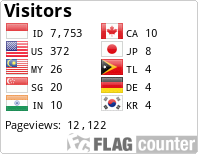PENGARUH PENGGUNAAN PESTISIDA TERHADAP KADAR SGOT (Serum Glutamic Oxaloacetic Transaminase) DAN KADAR SGPT (Serum Glutamic Pyruvic Transaminase) PADA PETANI DI DESA EPEEA KECAMATAN ABUKI KABUPATEN KONAWE
Abstract
ABSTRAK
Pestisida adalah bahan beracun berbahaya. Pestisida tersebut dapat menimbulkan dampak positif maupun negatif bagi kesejahtraan manusia. Dampak negatif tersebut akan menimbulkan berbagai masalah baik secara langsung ataupun tidak langsung terhadap kesehatan. Penelitian ini bertujuan untuk mengetahui pengaruh penggunaan pestisida terhadap kadar SGOT (Serum Glutamic Oxoloacetic Transminase) dan kadar SGPT (Serum Glutamic Pyruvic Transminase) petani yang menggunakan pestisida di desa Epeea kecamatan Abuki kabupaten Konawe. Jenis penelitian yang digunakan adalah asosiatif dengan teknik pengambilan sampel Purposive sampling dimana jumlah sampelnya sebanyak 22 orang. Berdasarkan uji korelasi penggunaan pestisida, terdapat hubungan penggunaan pestisida terhadap kadar SGOT dan SGPT. Hasil uji menggunakan analisa regresi pada tabel ringkasan ANOVA didapatkan nilai F (11,278) dengan nilai signifikan (0,003). Ha diterima dan Ho ditolak yang menunjukkan ada pengaruh penggunaan pestisida terhadap kadar SGOT dan kadar SGPT. Kesimpulan dalam penelitian ini adalah terdapat pengaruh penggunaan pestisida terhadap kadar SGOT dan SGPT pada petani di desa Epeea kecamatan Abuki kabupaten Konawe
Kata Kunci : Petani, Pestisida, SGOT dan SGPT
ABSTRACT
Pesticides are dangerous toxic substances. These pesticides can have a positive or negative impact on human welfare. These negative impacts will cause various problems both directly and indirectly to health. This study aims to determine the effect of pesticide use on levels of SGOT (Serum Glutamic Oxoloacetic Transaminase) and SGPT (Serum Glutamic Pyruvic Transaminase) levels of farmers who use pesticides in Epeea village, Abuki district, Konawe district. The type of research used is associative with Purposive sampling technique where the number of samples is 22 people. Based on the correlation test of pesticide use, there is a correlation between the use of pesticides on SGOT and SGPT levels. The test results using regression analysis in the ANOVA summary table obtained the value of F (11,278) with significant value (0,003). Ha is accepted and Ho is rejected which shows the influence of pesticide use on SGOT levels and SGPT levels. The conclusion in this study is that there are influences on the use of pesticides on SGOT and SGPT levels in farmers in the village of Epeea, Abuki, Konawe district
Keywords: Farmers, Pesticides, SGOT and SGPT
Additional Files
Published
Issue
Section
License
Authors who publish on JAKK can share their research in a number of ways. JAKK does not impose an embargo on published journals, meaning that researchers can access it openly after the article is published. Researchers who have subscribed to access to articles can also share.
JAKK already uses the Open Journal System (OJS) thereby enabling the final version of all published research articles to be placed in any digital archive immediately after publication. JAKK can automatically make feeds of open access articles available to any repository that wishes to receive them.
Authors who publish with this journal agree to the following terms:
* Authors retain copyright and grant the journal right of first publication, with licensed under a Creative Commons Attribution ShareAlike 4.0 International License (CC BY-SA 4.0) that allows others to share the work with an acknowledgement of the work's authorship and initial publication in this journal.
* Authors are able to enter into separate, additional contractual arrangements for the non-exclusive distribution of the journal's published version of the work (e.g., post it to an institutional repository or publish it in a book), with an acknowledgement of its initial publication in this journal.
* Authors are permitted and encouraged to post their work online (e.g., in institutional repositories or on their website) prior to and during the submission process, as it can lead to productive exchanges, as well as earlier and greater citation of published work.







2.jpg)

